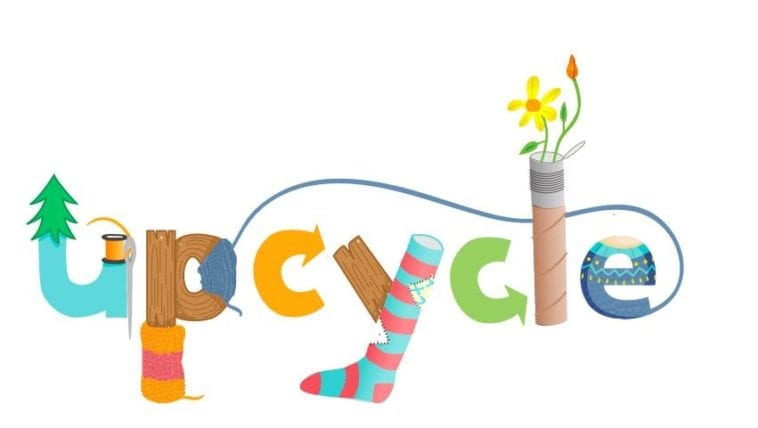
Recycling may ring a bell. After all, it is taught as early as first grade. It is in the textbooks. It is seen in trash cans. It is in everyone’s talk along with its two other siblings—reuse and reduce. In fact, mankind view the trio as savior of the human race in the midst of environmental chaos.
We can blame no one. People have a natural inclination to resort to ways that can minimize the degradation of the Earth. After all, this is all that we have. It is where we are now, and it will be the only place we will ever be. However, little did people know that this environmental move is actually disadvantageous in some ways, not only to the environment but also to humans.
This exact circumstance draw us closer to a new idea towards a more sustainable developed future—UPCYCLING. The term upcycling was officially coined by William McDonough and Michael Braungart in their book Cradle to Cradle: The Way We Make Things, published in 2002. Although the term has been referenced from other sources years before that, it was only then when the public become conscious of the method.
The practice of upcycling is familiar to people. It has, in a way or another, become part of their everyday lives. Part of them does that to made significant contributions in saving the planet. But the larger crowd resort to upcycling to save money. While the later motive is not wrong, a deeper perception towards upcycling is a must. A proven way to target this aim is to fully understand upcycling.
What is Upcycling?
You may have thought that “upcycling” is just another way to address “recycling.” While they are relatively close in definition, and some even think that they are synonymous, upcycling can stand alone. To be specific, upcycling differ in the process and impact. Recycling is enclosed in the idea of just converting waste into a reusable material. This is what you do when you collect plastic bottles and turn them over to junkshops or to local waste management officers, who you trust to use the materials for future processes. Perhaps, with a lower quality than the original.
On the other hand, upcycling goes beyond that. It requires more individual participation and effort. Innovation is also of the essence. So when we talk about upcycling, we do not just necessarily mean to use the same material for another purpose. It is more of creatively transforming that old item to an elevated one, usually to improve the aesthetics, use, quality, and even value.
By upcycling, we also create something useful out of a seemed “unrecyclable” stuff. It is possible because we think and “tink.” This is also one of the reasons why the concept is also referred to as an art. The overall process of upcycling utilizes creativity skills and imagination, then, later on, embeds that through a tangible upcycled form.
What Can You Upcycle?
When we talk about wastes, our minds immediately flash pictures of plastic bottles, used papers, candy wrappers and sachets, and disposable materials like plastic spoons and fork, cups, and straw. While these are some of the most evident trash around the world, upcycling is not limited to that. In fact, any stuff that no longer serves its purpose is a highly potential candidate for upcycling.
For instance, in the home, common trash includes non-biodegradable plastics and glasses. Both can be transformed into home decorations such as plastic spoons to lampshades, or empty wine bottles to a chandelier. A lot also use empty jars and plastic containers like flower pots after altering the designs. They are also converted to vases, organizers, wall decors, and cosmetic kits. A lot can be done.
But what’s more interesting is that upcycling can also be done to biodegradable materials. This includes the food you thought deserves the bin instead of your plate. By food waste, we do not talk about fungal-contaminated bread or viand. Rather, we talk about leftovers that sit in food containers overnight, waiting to be consumed but neglected the next day. Or, these are the vegetables or fruit you forgot in the fridge or the food counter which lost its freshness. So basically, these food are still edible and are not yet contaminated. What more, they can still be elevated from their flavors and presentation, though upcycling.
Kitchen wastes that can also be categorized under the food category are the fruit and vegetable peels. Usually, these types of waste automatically go to the trash. In fact, in a report by the United Nations Food and Agriculture Organization (FAO), as cited in Sagar, et.al (2018), “losses and waste in fruits and vegetables are the highest among all types of food [waste] and may reach up to 60%.” This statistic shows how the food industry contributes a lot to the totality of trash that in general, suffocates the land.
However, upcycling finds means of altering the “fate” of food wastes, particularly fruit and vegetable pills. Some fruits have chemical components that help fertilize the soil and catalyze other soil components to produce needed chemicals. According to Jariwala (2016), peels from banana, sweet lime, orange, and pomegranate have nitrogen, potassium, and phosphorus which increases the growth and yields of crops. Thus, they can serve as fertilizers to backyard plants.
Other fruit peels can be used as insect repellants. In 2017, Taylor & Francis Group, an online international journal, published that citrus fruit peels are an effective alternative to mosquito control. This was also seconded by other researchers such as the works of Badawy, Taktak & El-Aswad (2017).
Why is Upcycling Significant in a Zero Waste Lifestyle?
The very core of zero waste is to eradicate putting the trash to landfills and incinerators which make the planet really sick. By zero waste, we do not mean having any waste at all. Rather, it is keeping track of where you are the most wasteful and doing something to reduce unnecessary waste, if not all.
People who adhere to a zero waste lifestyle do all means to refute participation to that bulking toxic. Since most man-made products just end up in the trash, they refuse to accept more products that will later on compile and make up more waste materials. This is where upcycling enters. It does not only limit your trash. It also helps you manage to buy less products that will, later on, be put to waste.
Upcycling Tips and Tricks
The good thing about upcycling is that it has no limit. Though an art, it does not necessarily ask you for an expert-level set of skills. But it does require imagination, planning, and a little love. Here are some tips that will surely boost your confidence to upcycle, beginners or not:
- Plan ahead. Think about what specific material you want to fix, what purpose it will serve, what tools you need, and how exactly you will execute.
- Tap your creative soul. Upcycling means elevating and you certainly want to see that in your work. You can do it by thinking outside the norm, like converting an old luggage bag to a couch, or a wooden jalousie into a shelf.
- Use old materials altogether. To save you from all the hassle, try to group old stuff to others that match their new use. If you have old fluffy clothes and is planning to make couches from old tin cans, you can use the fabric as the foam.
- Finish work with sophistication. Upcycled things do not mean poor quality outputs. They can even be as luxurious as the new products or even higher than that. Do not forget to make sure that products are still finished with finesse despite their original form. Use wax, varnish, or coating for materials that need it.
- Be open to failures and try again. Upcycling may not necessarily mean ease for some. But one thing is sure—IT IS FUN. So when you feel like you cannot put that thought to work, try again and never give up.
Conclusion
Upcycling may be as unconventionable as it sounds. But it definitely is something we need to work on for a more sustainable society. We do not just make our creativity tangible. We also learn important physical and moral skills that we can treasure for life. Moreover, it is a move that does not only portray our zero waste lifestyle, it is also a way to say to the world that we care for the present and for the future.





Each year I grow more vigilant in reducing the amount of waste I put into the world. I’m down to about half a bag of garbage per week, and a lot of my food waste goes into my gardens which has really helped them to thrive. And most upcycling tasks only take a few extra seconds. So, it’s not that inconvenient for as much good as it does.
Good sharing. This information are useful for us. Thank you.
This is great! I’m loving the idea of upcycling food! It’s so sad to waste food when so many have none to eat. Thanks for this thoughtful post!
Hi, love your initiative for going zéro waste!! I love upcycling Nespresso capsules, there are many awesome art online! I made some Xmas decorations using recycled coffee capsules.
I am often to blogging and i really appreciate your content. The article has really peaks my interest. I am going to bookmark your site and keep checking for new information.